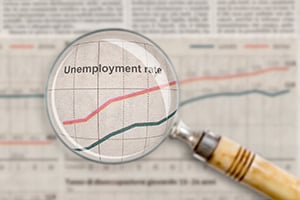 Thinking about the constraints I mentioned yesterday, I want to dig a bit deeper into the employment and jobs question. As I wrote last week, I expect the jobs market to stay tight. There are now more jobs out there than there are workers. Unless something drastic changes, that is likely to remain the case. As job growth continues to outpace workforce growth, that situation is likely to force changes, including increased automation.
Thinking about the constraints I mentioned yesterday, I want to dig a bit deeper into the employment and jobs question. As I wrote last week, I expect the jobs market to stay tight. There are now more jobs out there than there are workers. Unless something drastic changes, that is likely to remain the case. As job growth continues to outpace workforce growth, that situation is likely to force changes, including increased automation.
That’s in the medium to longer term. In the short term, however, there are reasons to believe the job market could get tighter even faster than we now think. In this case, however, it is not a demographic or economic issue; it is a policy issue. As we saw at the onset of the pandemic, policy can have a significant economic effect if it is severe enough.
Vaccine Mandates and Employment
The issue I am watching here is vaccine mandates for employment. The White House is requiring vaccinations for federal employees by November 22 and contractors by December 8. An increasing number of organizations and companies are starting to require vaccination for employment as well, partially driven by the proposed White House requirement, which would apply to companies with 100 workers or more. The intent here is good: to protect the public and provide for predictable operations. But, as always, there could well be unexpected consequences. In this case, I think we are already seeing those in the job market. So, rather than look at any one company, let’s take a look at the big picture to see what those consequences might be.
Potential Fallout
At the highest level, rounded, there are about 150 million employed workers in the U.S. It is actually a bit less than that, but close enough so let’s make it easy. About half of those, or 75 million, work in companies that have 100 employees or more, so will be subject to the vaccine mandate. What happens when the vaccine mandate kicks in fully?
Not everyone is going to accept the vaccine. Some will quit. We know this from companies that have already implemented a mandate. Given the size of that population, that vaccine fallout will be material for the economy as a whole. For each 1 percent of that population that refuses the vaccine, that is another 750,000 who will be out of the labor force. Yes, some of those people will get jobs that don’t require vaccination, but that will not solve the problem of the companies that have to replace them. Given the shortfalls we already discussed last week, even a 1 percent fallout rate would have a material effect on the job market. If it hit 2 percent to 3 percent, that would start to get close to the effect of early retirements that started to create the current situation. If we lose a couple of million workers from the labor force, the current shortages get even worse.
So far, in many companies, the fallout rate is nowhere close to that. But in others, it is even higher and definitely at levels that would affect the labor force. According to the Washington Post, for example, United Airlines is at 99.7 percent vaccinated, which is fine, but Tyson Foods is at 96 percent. Arguably, Tyson may be a better reflection of the workforce as a whole, and 4 percent fallout would take roughly 3 million workers out of the labor force. And if you argue Tyson is an exception, the Post also reported even Harvard University is at 97 percent for a 3 percent fallout. Looking at these numbers, vaccine fallout of 3 percent to 4 percent looks quite possible. That would hit the labor supply for millions of workers, making existing shortages even worse.
Given the risks, there are signs that policy is responding. Just this morning, the Post reported the Biden administration expects to be flexible on the mandate deadlines as business organizations have lobbied for delays over the fears we discussed above. Given that flexibility, the impact on the labor force in the short term could be less than the numbers would suggest. There will, however, be some impact. And if the mandates are confirmed, it will get worse over time.
A Rising Headwind?
This is not something that will sink either the labor market or the economy, but it is one more gradually rising headwind that could continue to slow the economy. Both the economy and the markets have been largely assuming the pandemic is behind us. On the medical front, things are improving, and over time that outcome will likely be true. But on the economic front, the risks are still very much in play. This is one more thing we need to watch going forward.


 Print
Print

